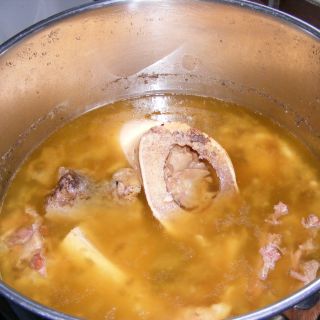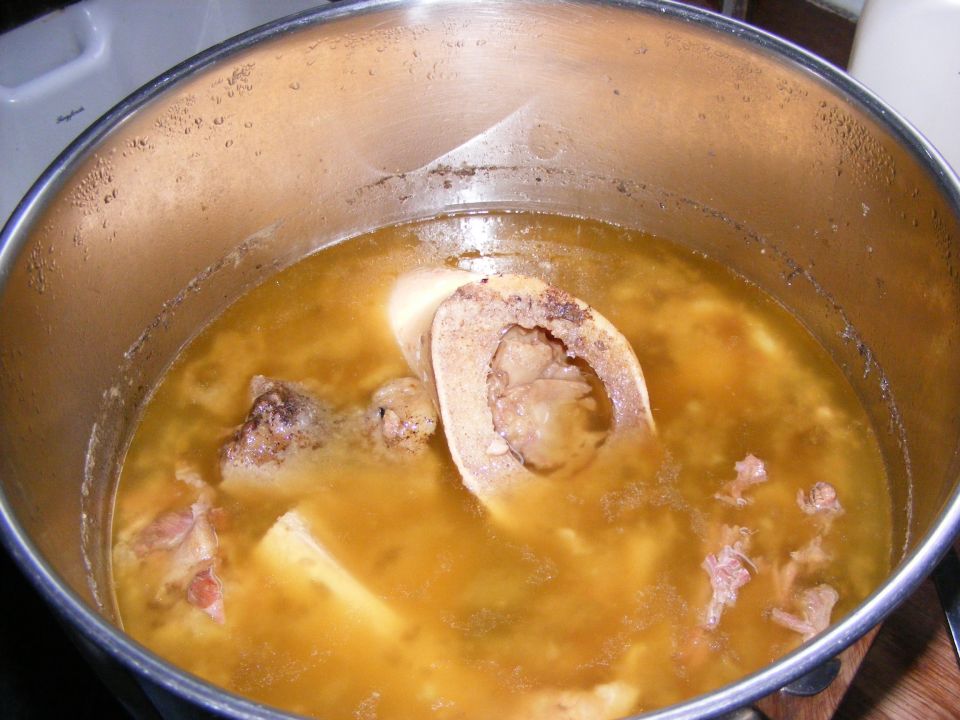Broth and Stock Making Tips
A good stock (or broth) is the cornerstone of a great dish. And when it’s made just right, it is good enough to drink on it’s own which is a great way to quickly and easily get essential nutrients in to your body.
The following tips are my summary of an interview I heard on Sunday Weekends show with Simon Marnie when he interviewed food writer, Michelle Cranston.
General Tips and Tricks:
- Make an effort to cook stock and broth all year round
- Stock making is all about the aromatics and passing those into the foods you’re cooking
- All stocks should include celery, carrot, leek, onions, herbs and Apple Cider Vinegar (ACV)
- Prepare your stock in large pot, bring it to a boil and then reduce heat so the water is just trembling
- If you can, skim the “muck” for the top of your stock as it’s cooking (especially if you’re using vegetable peelings in your stock)
- At the end of the cooking time, strain the stock and then reduce once more. Bring the water to a boil and simmer gently until it’s reduced to your liking.
- Once reduced, place in preferred containers (icecube trays are handy) and defrost as needed.
- To give body to your stock, add lentils or a small handful of oats
- If your stock is a thick concentration (after being reduced) you can add water to it again when it’s time to use it
- Cook for 6 hours
- Best bones to use are Grass Fed Brisket Bones, or a combination of Brisket Bones and Marrow Bones
- If time allows, brown bones first in a 180 degree oven until the bones are a golden colour (no oil required, just place the bones straight in to a roasting pan)
- At a minimum, add celery, carrot, leek, parsley, sage, rosemary and thyme, and ACV
- Cook for 6 hours (same for vegetable stock)
- Best bones to use are Free Range Chicken Frames and Wings. For extra gelatin you can add Chicken Necks too.
- White Chicken Stock is stock made from raw bones
- Brown Chicken Stock is stock made from bones that have already been cooked (e.g. bones leftover from roasting a Whole Chicken)
- As opposed to meat stocks, seafood stocks must be cooked quickly
- Cook for 30 minutes only – any longer and the stock will taint and go sour
- Fennel is a great flavour in seafood stock
- Due to the fast cooking time, it’s a good idea to puree the veggies or fry them off in pan first so that you still get maximum flavour
- The best bones to use are from firm white fish
- Prawn shells can also be used – allow 40 minutes cooking time

About Alison Clinch
Alison Clinch has 20 years marketing experience gained in small and medium size business. She is especially passionate about supporting local communities, communications, and brand management. In her role with The Free Range Butcher Alison is responsible for the company’s branding, promotion, advertising and website. Her experience in the kitchen and passion for good food also brings refreshing new ideas for our recipe suggestions. Initially working alongside her husband Ben at the farmers markets, Alison is more ‘behind the scenes’ now, and keeping busy with two young apprentices’ / kids, Tom and Georgia.
Latest Articles

Cheats Tacos
These are the ultimate mid-week Taco night dinner because you don’t even have to brown off the meat. The family will love the taste, and the head cook will love how easy these are to make. Defina…

Beef Udon Stir Fry
This Udon Beef Stir-fry is a quick, flavour-packed dish that brings together tender beef, hearty noodles, and a mix of colourful vegetables in a rich, savoury sauce. Perfect for busy weeknights, it…

Roasted Butterflied Chicken
Our marinated butterflied chickens are perfect for an easy mid-week meal or entertaining on the BBQ. The butterflied chicken has the backbone removed but still contains the drumstick and wings. T…
Copyright © The Free Range Butcher.









Leave a Reply